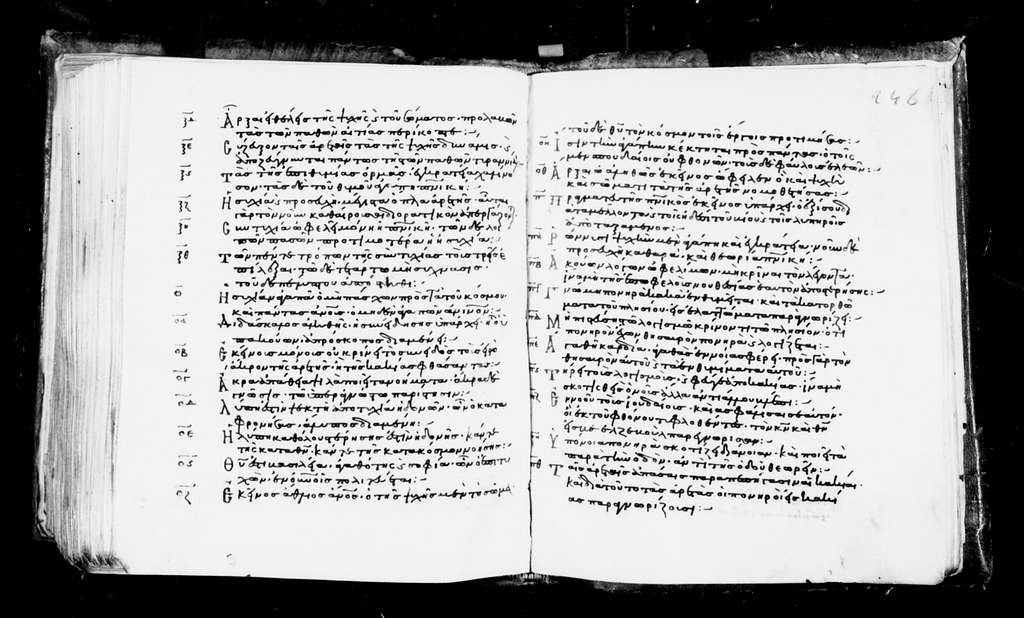
Embarking on a lifelong mission, a devout Greek ascetic Monk named Nicodemus, also known as Nicodemus of the Holy Mount Athos (Greek: Άγιον Όρος) , curated endangered texts of spirituality and prayers. This dedicated effort culminated in the creation of the massive tome, Philokalia, aiming to preserve and revive Byzantine spiritual wisdom.
His aim was to safeguard the texts for the spirituality and piety contained in their pages. Philokalia is the most famous of his works, compiled with the help of Metropolitan Bishop of Corinth Makarios. Within its pages, the spiritual wisdom of Byzantium is preserved to eternity.
Life of Nicodemus
Born Nicholas Kallivourtzis on Naxos island in 1749, early on, his acute mind and intellectual acuity made him stand out from his peers. He advanced his tutelage from his parish priest to that of Archimandrite Chrysanthos, who was the brother of St. Cosmas Aitolos.
From Naxos, he made his way to Smyrna to study theology, ancient Greek, Latin, French, and Italian at the Evangelical School. His studies were cut short in 1770, however. This was because, along with other Greeks, he was persecuted by the Turks who ruled over Greece at the time.
He returned to Naxos and, in 1775, he went to Mount Athos and became a monk at the Dionysiou Monastery. As dictated by tradition for those who abandon the secular world, he changed his name to Nicodemus.
At the monastery, he was initiated into the practice of hesychia, a method of prayer involving inner stillness, controlled breathing, and repetition of the “Jesus Prayer” (“Lord Jesus Christ, Son of God, have mercy on me, a sinner”).
Ο Άγιος Νικόδημος ο Αγιορείτης γεννήθηκε στη Νάξο το 1749. Κατά το βάπτισμα ονομάσθηκε Νικόλαος. Πρώτος του δάσκαλος ήταν ο ιερέας του χωριού. Ο μικρός Νικόλαος καθημερινά παρακολουθούσε τις ακολουθίες, μάθαινε τους ιερούς ύμνους και εντασσόταν στη λειτουργική ζωή της Εκκλησίας. pic.twitter.com/tIzFCxacNs
— Τάλαντο (@talantooo) July 13, 2022
According to testimonies of his contemporaries, Nicodemus was a kind, simple man, distinguished by his profound concentration. His mental abilities were admirable. He knew the Holy Scriptures by heart and even remembered the chapters, verses, and pages they were on. He could recite long passages from the writings of the Holy Fathers.
Nicodemus aligned himself with the monks known as Kollyvades. They were a group of monks who sought a revival of traditional Orthodox practices and patristic literature.
In 1777, Metropolitan Bishop of Corinth Macarius arrived at the monastery and requested that the young monk edit the manuscript of Philokalia, which he had found at Vatopedi Monastery. Editing this book was the beginning of many years of literary activity for Nicodemus.
That turned out to be Nicodemus’ calling. From then on, he spent the rest of his life translating and publishing those texts, while also writing religious books of his own.
In 1783, Nicodemus was tonsured into the Great Schema and spent the following six years in complete silence. He attained the rank of megaloschemos, the highest degree for Greek orthodox monks.
Philokalia
Philokalia means “the love of the beautiful” in Greek. It is a collection of texts on prayer and spirituality written between the fourth and fifteenth centuries by spiritual masters of the mystical hesychast tradition of the Orthodox Church. It is about inner ascetism rather than religious obedience to a monk’s superior. The focus is on inner prayer and solitary communication with God, or the kingdom within.
Nicodemus worked fervently on compiling the scattered texts, translating the esoteric language in many of them and deciphering the occasional cryptic shorthand and marginal notes. It was demanding, arduous work, which the gifted Greek monk completed with great zeal.
The devoted monk gathered all unpublished manuscripts from any and all major hesychasts of the Orthodox East—from Evagrius Ponticus to Grigorios Palamas.
The final work of Nicodemus was a spiritual ark of the Orthodox Christian faith. Its purpose was the passing on of past wisdom to future generations. This was in the hopes that time would not erode the wisdom of the ages.
Other Works by Nicodemus
Another piece of Nicodemus’ work was completed with Makarios of Corinth. This was the compilation and publishing of The Evergetinos. It was a sizeable compilation of material from several collections of sayings of monastics and other persons. It included excerpts from the well-known works of St. John Cassian and Palladius as well as the anonymously produced Apophthegmata collections. In addition, it contained materials from hagiographies.
The Greek ascetic monk wrote several important works and compiled other existing ones. One of these is the compilation of canons known as the Pedalion (or The Rudder), which he co-wrote with a priestmonk named Agapios Monachos.
Another famous work of Nicodemus is the Enchiridion of Counsels (or Handbook of Spiritual Counsel). It is a handbook on religious life, aimed at clergy and lay Christians alike. The book continues to be influential on Greek spirituality to this day. Its contents have been described as a theological-ethical tract that combines deep psychological insight and a keen scientific mind.
Furthermore, Nicodemus had a more universal approach as a result of his well-rounded knowledge. He had profound insights into spiritual writers of the West and published reworked versions of the Spiritual Exercises of Ignatius of Loyola and The Spiritual Combat by Lorenzo Scupoli.
After dedicating his life collecting and editing manuscripts found among the libraries of Mount Athos, Nicodemus passed away in 1809. He was canonized by the Ecumenical Patriarch of Constantinople Athenagoras in 1955.
See all the latest news from Greece and the world at Greekreporter.com. Contact our newsroom to report an update or send your story, photos and videos. Follow GR on Google News and subscribe here to our daily email!



